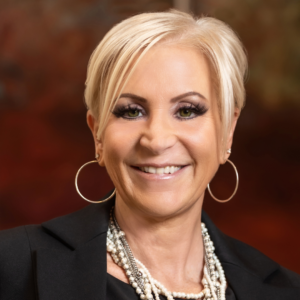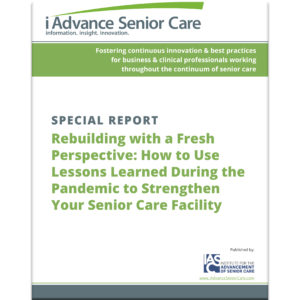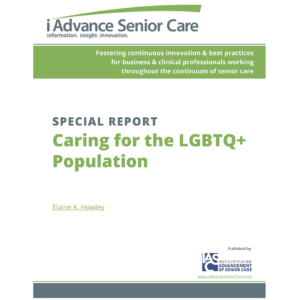Slicing and dicing nursing home business risk
The nursing home industry is not meant for the fainthearted. It is an environment brimming with risk of all shapes and sizes. The pressures that drive these risks spring from regulations, the reimbursement system (Medicare and Medicaid) and good old-fashioned market forces. For this analysis I have divided the risks that the nursing home industry faces into two distinct types: Business Risk of Capital and Business Risk of Operations.
BUSINESS RISK OF CAPITAL (BRC)
BRC is the risk that the capital investment of the owner (also known as the capitalist/owner) takes that the real estate/buildings, beds and business will decline in value for many reasons. There are two major business risks faced by the nursing facility owner:
- Macro-market risk is linked to the demand for nursing home services. Macro-market conditions include factors such as community-based services drawing potential customers away from institutional providers.
- Micro-facility risk, the second risk that BRC owners face, include issues such as bad surveys, bad reputation, facility wear and tear or poor service quality.
BRC is significant because the owner of the bricks/beds/business faces both macro-market risks as well as risks that flow from the day-to-day facility operation. The capitalist/owner has invested his or her own money in the nursing home operation. This relationship is not defined by a paper lease or management contract but rather by the significant act of investing one’s wealth in real estate and a business. Despite the fact that nursing homes operate in a governmentally protected marketplace, they operate in a particularly volatile environment subject to increasing regulatory regimens and reductions in reimbursement.
In addition, the capitalist/owner faces, albeit indirectly, the full panoply of operational risks that besiege the typical nursing home. The owner may not be in the direct line of fire, but the trickle-down effect of poor care and service quality can have a deleterious and often a disastrous effect on the underlying value of one’s asset.
BUSINESS RISK OF OPERATIONS (BRO)
This term defines the risks that a nursing home operator faces. One may:
- not get paid (receivables);
- not get paid enough (reimbursement);
- not find enough customers (revenue); or
- get sued, shut down by the state, get unionized or simply die a death of a thousand pinpricks (in a nursing home, anything that can go wrong often does).
The risks that nursing homes face on a daily basis should not be minimized. Although they operate in a governmentally protected market, nursing homes still face inordinate risks that spring from the regulatory system, reimbursement programs and unforgiving market forces.
For entry level hands-on caregivers, our industry functions on a wage-scale comparable to the fast-food industry. In terms of the life-and-death risks they face, nursing homes are on par with any healthcare provider including the medical-surgical services of any hospital.
A RISK COMPARISON
An attorney once told me about an old nursing home family that went into the hospitality industry (hotel/motel) and how that was as bad as the nursing home business. I replied that most hotel/motel owners do not lay awake nights worrying about their guests experiencing an untimely death or disability and cascading recriminations from every second-guessing regulator or attorney that can poke their finger in the face of the nursing home operator.
Lawsuits, retroactive reimbursement denials, never-ending cuts to Medicare and Medicaid, families that think mom’s social security check is theirs and that paying bills is optional, damage wrought by the least motivated one percent of any workforce, demanding family members plus a thousand more sad realities are all a part of the risk inherent in nursing home operation.
These risks can be managed and controlled to a degree, but only a fool (or someone outside of the industry) would believe that they can be eliminated.
OWNER/OPERATOR MODELS
Operators in the nursing care environment operate in one of the following arrangements:
- Owner/operator melded into one entity
- Lease agreement between owner and operator
- Management contract between owner and operator
Admittedly, this is not an exhaustive list of owner/operator arrangements, but it is a fairly good summary of the major ones used in the LTC industry. Each arrangement in some way alters the level and texture of BRO faced by the operator as well as the BRC of the capitalist/owner.
Combined owner/operator. This model is epitomized by the large national, regional and state chains. They are both owner and operator melded into one single organizational entity that takes on all of the business risk inherent in both the ownership and operation of nursing homes—the BRC and the BRO. It is a model that has many examples of failure with many chains going out of business over the past 30 years.
The reasons for failure of this model are many and varied. Undoubtedly the concentration of all of the business risk (BRO and BRC) in a single organizational entity likely has contributed to the failure of some of these organizations.
The nursing home industry is besieged by ample portions of BRC and BRO—factors that impact the ability of a provider to be successful. When an owner/operator nursing home organization is challenged by the full force of both macro-market and micro-facility forces, the options can be limited and, ultimately, inadequate. By virtue of one organization acting as both owner and operator, divorce is very seldom an option.
Lease agreement between owner and operator. This arrangement is fairly common. It involves two separate organizations; one owning the bricks/beds/business and the other (the lessee), under a lease agreement, operating the facility on a day-to-day basis. Under the lease model, the owner assumes the full burden of the BRC and, in turn, the lessee assumes the entire burden of the BRO.
Unfortunately it is not quite so clean and simple, especially for the capitalist/owner. The micro-facility component of the BRC is an ever-present reality in the lease arrangement. Clearly every operational and capital decision made by the lessee has the potential to impact both the short- and long-term performance and underlying value of the business.
This reality is complicated further by the fact that there is an inherent dilemma that every operator/lessee faces when making many operational and capital (leasehold improvements) decisions. The crux of the dilemma is cash. In simple terms, it boils down to the fact that every dollar spent by the operator on the operation or on the facility in terms of leasehold improvements is a dollar not going into his/her pocket in the form of profits.
The analysis of the operator/lessee hinges on balancing the decisions made between short-term profitability and the long-term viability of the property. As the timeline moves toward the end of the lease agreement, the dilemma about spending money grows even riper with conflict. If the operator/lessee has decided to move on and not renew the lease agreement, it is foreordained that operational and capital corners will be cut.
Totally independent of the operator/lessee’s intentions and motivations, the fact remains that the inherent nature of spending money has a bearing not only on profits but on the long-term viability of the property.
Clearly the capitalist/owner bears a heavy burden in terms of his or her exposure to the macro-market and micro-facility risks inherent in the world of nursing homes.
Since divorce in such an arrangement is messy, the trust between owner and operator must extend beyond the black and white of a lease agreement. The potential for erosion of the owner’s asset is sky high on a good day. In the hands of an operator incapable or unwilling to make the correct operational and capital decisions, there is little hope for long-term viability.
Under the owner/operator management contract variation the owner assumes all of the BRC as well as a significant (if not all) portion of the BRO. Under this arrangement, the operator assumes the duties of day-to-day operation for a fixed fee (usually a percentage of revenues).
The advantage to the capitalist/owner under this arrangement is that he or she retains the exclusive rights to any profits that the operation might generate. In addition, the capitalist/owner has a direct say in capital and operational decisions ameliorating to a certain extent the micro-facility component of his BRC.
The decided disadvantage to this arrangement for the capitalist/owner is that for the cost of potential profits he or she assumes all of the BRO. For the capitalist/owner with the stomach for the whole smorgasbord of risk (BRC and BRO) partnering with a credible, competent and committed management contractor might make perfect sense.
For the operator, two realities stand out. First, he or she has no skin in the game. Like an hourly employee drawing a paycheck, the operator can, and I am sure often does, go through the motions. Secondly, this arrangement is akin to a married couple living in a no-fault divorce state. Management contractors come and go.
CONCLUSION
Capitalist/owners as well as operators need to understand the essential nature of the capital and operational risk inherent in the nursing home industry. Although the nursing home market is protected by the government through such devices as certificate of need laws, it is fraught with peril. The essential nature of this peril can be altered to varying degrees by the multiple legal/organizational arrangements available to owners and operators. It is incumbent on all parties to understand the dynamics at work in these arrangements so that the long-term interests of the capitalist/owner are safeguarded.
Kevin R. McMahon, LNHA, is President of Good Life Ventures, a 501 (c) 3 organization dedicated to improving nursing home services. He can be reached at krm3308587143@gmail.com.
Related Articles
Topics: Articles , Executive Leadership , Risk Management











